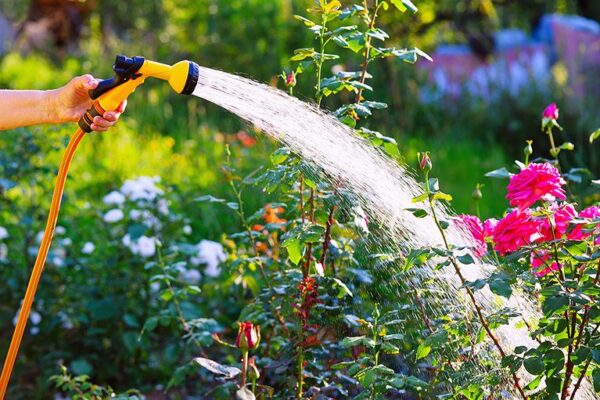How to Grow and Care for Princess Flower
Discover the advantages of learning how to grow and care for Princess Flower. Native to Brazil, the princess flower (Tibouchina urvilleana) is an exquisite addition to gardens in tropical and sub-tropical regions. It has been recognized for its outstanding qualities by the Royal Horticultural Society, earning the prestigious Award of Garden Merit. This evergreen plant boasts broad leaves that are soft and covered in fine hairs, with striking red edges that contribute to its visual appeal and inject a vibrant burst of color into any landscape.
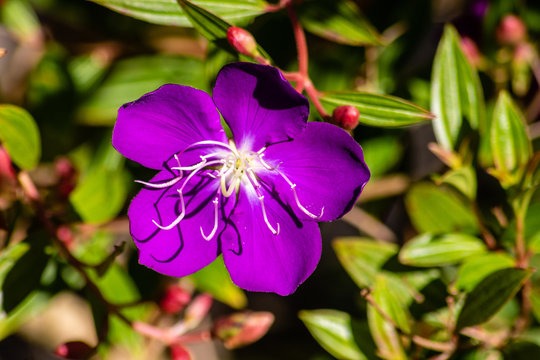
Typically grown as a shrub in the United States, the princess flower can occasionally reach a size substantial enough to transform into a small ornamental tree. The leaves of this moderate-growing plant measure between two and six inches in length and are about one and a half inches wide. Its large flowers, spanning three to five inches in width, showcase a deep and vibrant purple hue. Given the appropriate climate conditions, the princess flower has the potential to bloom throughout the year, particularly when regularly deadheaded to stimulate the growth of additional flower buds. Its fruit takes the form of small brown capsules, each measuring less than half an inch in length.
The princess flower can be utilized as a captivating specimen plant or as an attractive border or foundation planting. For optimal growth, it is recommended to plant this species in the springtime. Follow these steps on how to grow and care for Princess Flower.
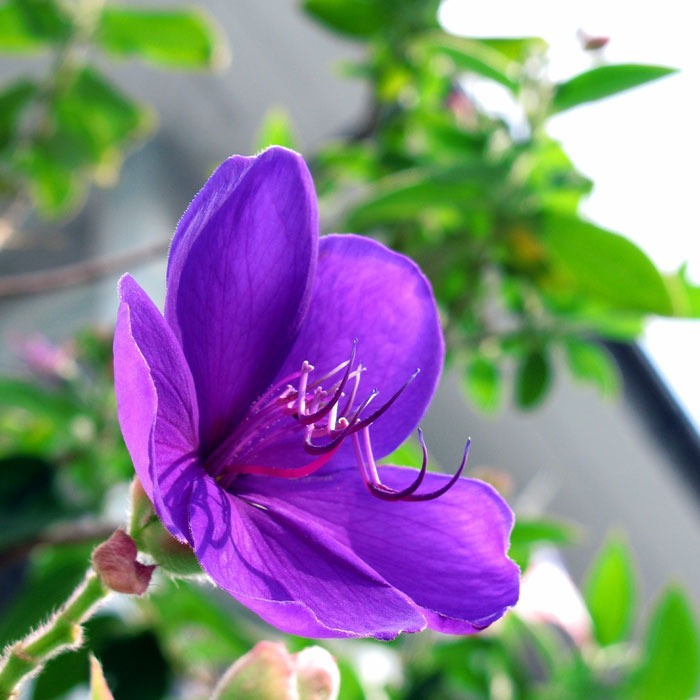
Instructions: How to Grow and Care for Princess Flower
To cultivate princess flower (Tibouchina urvilleana), it is essential to select a location with rich, fertile soil that retains moisture effectively while ensuring proper drainage. It thrives best when exposed to full sun. Given its sensitivity to frost and strong winds, it is crucial to safeguard the plant from these harsh weather conditions.
If you reside in USDA hardiness zone 8 or below, it is advisable to grow the princess flower in a container. This enables you to bring it indoors during winter, granting protection from the cold temperatures. However, it is vital to provide the plant with adequate warmth and sunlight while it is indoors.
The princess flower naturally assumes a rounded or vase-shaped growth habit, and it attains considerable height when it reaches maturity. Many gardeners prefer to prune the plant to manage its size and shape, encouraging a more compact and controlled form.
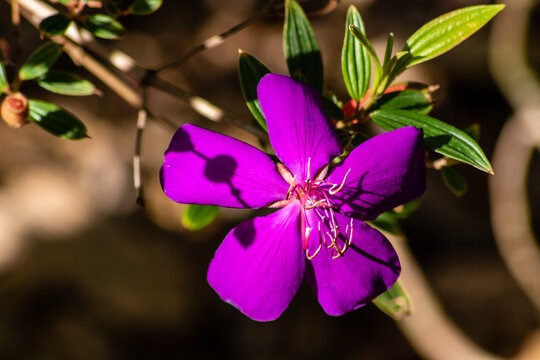
Light
The princess flower (Tibouchina urvilleana) thrives in full sun conditions, although it can tolerate partial shade if it still receives a minimum of six hours of direct sunlight each day. In USDA hardiness zones 9 and 10, it is advisable to provide some shade to protect the plant.
Soil
To ensure the well-being of your princess flower, it is recommended to provide it with moist and nutrient-rich soil. While the plant requires regular watering, it is crucial to ensure that the soil has adequate drainage, as excessive moisture can lead to root rot. The princess flower favors slightly acidic soil, which can be achieved by incorporating soil amendments such as peat moss or by applying acidic fertilizers.

Water
While the princess flower exhibits some tolerance to drought, it thrives best when watered regularly. Unless experiencing exceptionally hot conditions, watering the plant once a week is typically sufficient. It is advisable to provide no more than one inch of water per week, considering a combination of rainfall and irrigation. It is important to be cautious and avoid overwatering, as excessively wet soil can harm the plant.
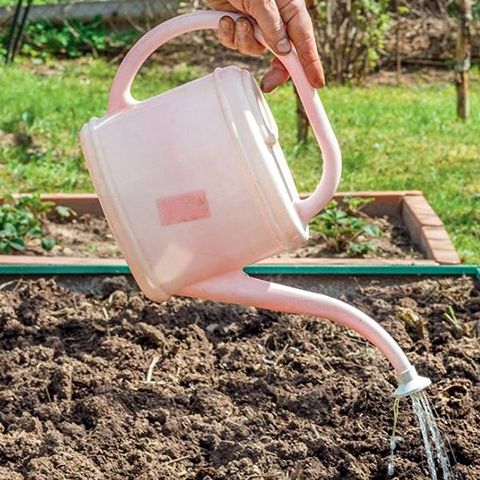
Temperature and Humidity
The princess flower (Tibouchina urvilleana) is a tropical plant and is highly sensitive to frost. If you reside in an area where this plant is not winter hardy, it is recommended to cultivate it in a container. Before the onset of the first fall frost, it is crucial to relocate the plant indoors for protection.
Fertilizer
For optimal growth and development, it is advisable to fertilize your princess flower during the spring, summer, and fall seasons. You can utilize fertilizers specifically designed for acid-loving plants such as rhododendrons or azaleas. Additionally, incorporating a small amount of well-rotted manure will also benefit the plant. Applying a layer of organic mulch around the base of the plant will help retain soil moisture, promoting its overall health.

Pruning
Similar to most shrubs, the princess flower should undergo pruning to remove any dead or damaged branches at any time. Beyond this maintenance pruning, additional pruning is generally conducted to maintain a desired rounded shape or to train the plant into a standard tree form. To shape the plant and manage its size, it is best to perform pruning immediately after the shrub has finished flowering. Pinching off new growth will encourage the development of branches, resulting in a fuller shrub appearance.

Princess Flower Propagation Technique
To propagate the princess flower (Tibouchina urvilleana), you can employ the method of rooting softwood cuttings. Here are the detailed steps:
- Obtain four-inch sections of soft green stem by making a clean cut just below a leaf node.
- Trim away the leaves from the bottom half of the stem, ensuring that only the upper portion retains foliage.
- Dip the cut ends of the stem into rooting hormone, which aids in the development of roots.
- Prepare a container filled with a seed-starter mix, providing a suitable medium for root development.
- Plant the prepared cutting into the container, gently inserting it into the soil to secure it in place.
- Enclose the container by covering it with a large plastic bag, ensuring the bag is securely fastened at the top. Alternatively, you can use a plastic dome to create a mini-greenhouse effect.
- Place the container in a bright area away from direct sunlight. It is ideal to maintain temperatures between 65-75 degrees Fahrenheit (18-24 degrees Celsius).
- Regularly open the bag or remove the dome once a day to mist the soil and the cuttings, promoting the necessary moisture levels for successful rooting.
- After a period of 10 to 12 weeks, the cutting should have developed a sufficient root system. At this point, it can be transplanted into a larger container or planted directly into an outdoor garden location after hardening off, which involves gradually acclimating the cutting to outdoor conditions.
Growing Princess Flower from Seed
Growing princess flower (Tibouchina urvilleana) from seed is a straightforward process. If you have collected the seeds, it is recommended to store them in a paper bag within a refrigerator until the appropriate time for spring sowing. Follow the steps below to successfully grow princess flower from seed:
- Prepare a shallow seed tray and fill it with about two inches of seed starting potting mix. Ensure the mix is adequately moistened before proceeding.
- Plant the princess flower seeds in the tray, spacing them approximately one inch apart. Cover the seeds with a thin layer of seed starting mix to provide them with suitable coverage.
- Cover the seed tray with a plastic bag, creating a mini-greenhouse environment for the seeds. Place the tray in a warm and brightly lit area, ensuring it is not exposed to direct sunlight. This location will provide the optimal conditions for germination.
- Monitor the moisture levels within the tray to ensure the soil remains consistently moist, but not overly saturated. Adjust the watering as needed to maintain the ideal conditions for seed germination.
- Once the seedlings have reached a height of approximately two inches, it is time to transplant them into larger pots. Carefully remove each seedling from the tray, ensuring minimal disturbance to their delicate roots. Plant them in individual pots filled with suitable potting mix.
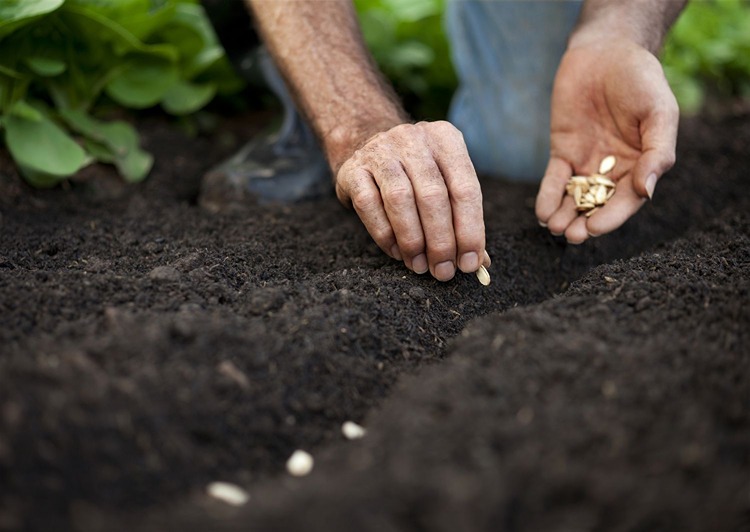
Potting and Repotting Princess Flower
When potting or repotting your princess flower (Tibouchina urvilleana), it is important to consider the size of the plant and choose a container that is only one to two inches larger than its current pot. Follow these steps for successful potting or repotting:
- Prepare a potting mix using peat-based soil as the base. To enhance drainage, incorporate perlite, sand, or vermiculite into the mix. Ensure the potting mix is moistened thoroughly.
- Begin by scooping one to two inches of the prepared potting mix into the bottom of the container. This layer will provide a suitable foundation for the princess flower.
- Gently remove the princess flower from its current pot, being careful not to damage the delicate roots. Place the plant on top of the potting mix in the new container.
- Fill the remaining space in the pot with the potting mix, ensuring that the plant is properly supported and the roots are covered adequately. Avoid compacting the soil too tightly.
- After potting, you may choose to prune the stems of the princess flower using clean gardening shears. This will help promote healthy growth and maintain an appealing shape.
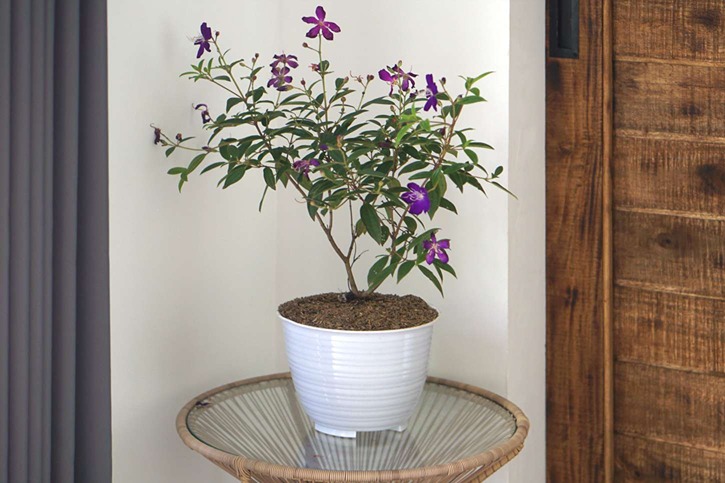
Overwintering
As princess flowers are native to tropical climates, it is necessary to protect them during the winter months to prevent dieback. One option is to grow the plant in a container, allowing you to bring it indoors for the winter. Follow these guidelines for overwintering:
- Trim a potted princess flower back to approximately eight inches in height before bringing it indoors for the winter. This will help manage its size and make it easier to accommodate indoors.
- Store the plant in a cool, dark location such as a garage or basement. If kept in darkness, provide minimal water to prevent the soil from drying out completely.
- Once the last frost date has passed and the risk of freezing temperatures has subsided, you can safely move the princess flower back outdoors for the growing season.
Common Pests & Plant Diseases
At times, the princess flower (Tibouchina urvilleana) may face infestations from pests such as scale, nematodes, aphids, mealybugs, and geranium budworm. To manage these issues, you have a few options. You can introduce beneficial insects like lady beetles (ladybugs) to control the pest population. Alternatively, if insects are present in significant numbers, you can use insecticidal soap or horticultural oil to spray the affected plant and mitigate the infestation.
Mushroom root-rot can be a concern if the princess flower is grown in excessively wet or soggy soil. To prevent this problem, it is crucial to avoid overwatering. It is recommended watering the plant no more than once a week. Additionally, if the shrub receives sufficient rainfall, approximately one inch per week, there is no need to provide additional watering.

Promoting Blooming in Princess Flower
The princess flower is known for its year-round blooming, producing stunning deep purple flowers. To encourage the plant to bloom more abundantly, it is beneficial to practice deadheading. Removing spent flowers stimulates the formation of new buds and prolongs the blooming period.
This flowering shrub thrives when exposed to full sun throughout the day. In hotter climates, it can tolerate slightly less than full sun, approximately five to six hours per day. However, providing full sun conditions generally results in larger leaves and a higher number of blooms.
To maintain optimal blooming, it is important to ensure that the soil remains consistently moist but not waterlogged. If the top layer of soil appears dry, it indicates the need for watering. Providing sufficient water is essential for the princess flower to continue producing beautiful blooms.



